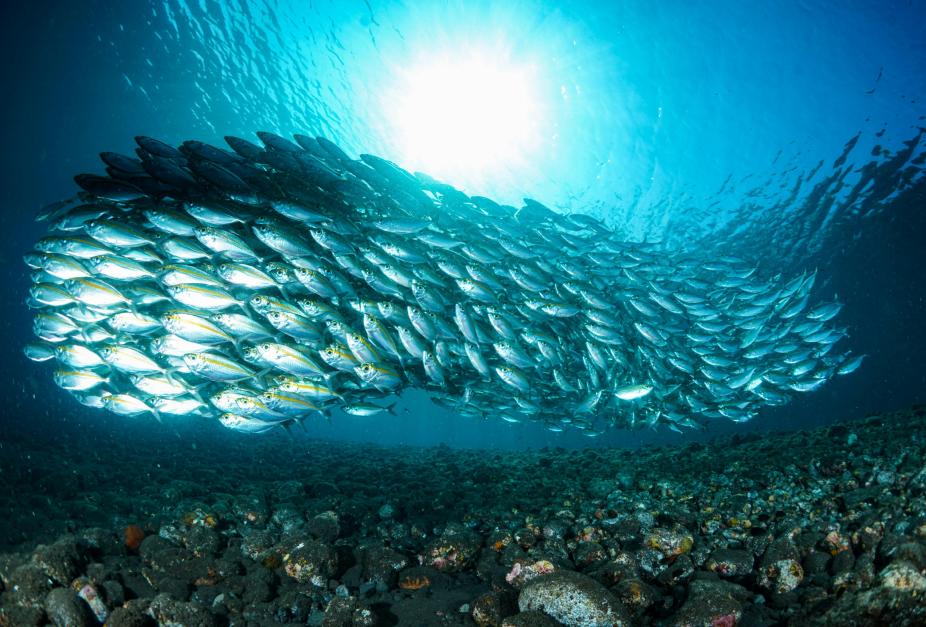NSF NCAR-led project generates massive, freely-available dataset on climate and fisheries
The changing climate has profound implications for marine life, but understanding exactly how is incredibly challenging.
Now, scientists at the U.S. National Science Foundation National Center for Atmospheric Research (NSF NCAR) have linked together multiple state-of-the-art computer models to create a detailed picture of how conditions in the atmosphere affect the ocean, plankton, and fish.

Image of school of fish from pexels.com.
The result is an incredibly rich, high-resolution global dataset that stretches over multiple decades and can help answer a range of scientific questions about how oceans are changing. Ultimately, the work sets the stage for improved predictions of how a warming climate will impact fisheries, which is critical information to support sustainable management.
Details of the new dataset, which relied on the NSF NCAR Cheyenne supercomputer and the Frontera supercomputer at the Texas Advanced Computing Center, are published in the journal Progress in Oceanography. The work was funded by NSF, NASA, and the National Oceanic and Atmospheric Administration (NOAA).
“We are really excited to make this ocean dataset available,” said NSF NCAR scientist Kristen Krumhardt, who led the work. “There are so many questions that could be answered.”
For the new study, scientists used the NSF NCAR-based Community Earth System Model version 2 (CESM2), to simulate the ocean at a resolution that is 100 times higher than typical from 1958 to 2021.The scientists prescribed the atmosphere to mimic the historical conditions and then allowed the ocean component of the model to react. The effort included a newly updated biogeochemistry model called the Marine Biogeochemistry Library (MARBL). With the rich data on how the climate affects conditions in the ocean, the researchers had what they needed to feed a separate fisheries model called the Fisheries Size and Functional Type model, or FEISTY. The model was originally developed at the Geophysical Fluid Dynamics Lab, a collaborative program between Princeton and NOAA.
The dataset resulting from the project could be used to answer a wide variety of interesting questions, Krumhardt said, including looking at how marine heatwaves, ocean acidification, and changes to sea ice might have affected fisheries in the past. The dataset will allow researchers to better characterize links between climate and fisheries health and, ultimately, build a foundation for forecasting how fisheries are likely to fare in a warmer future.
“To me, it’s an amazing model,” Krumhardt said.
For more information on this extraordinary dataset, which is freely available to the community, read the full news story from the University Corporation for Atmospheric Research (UCAR).